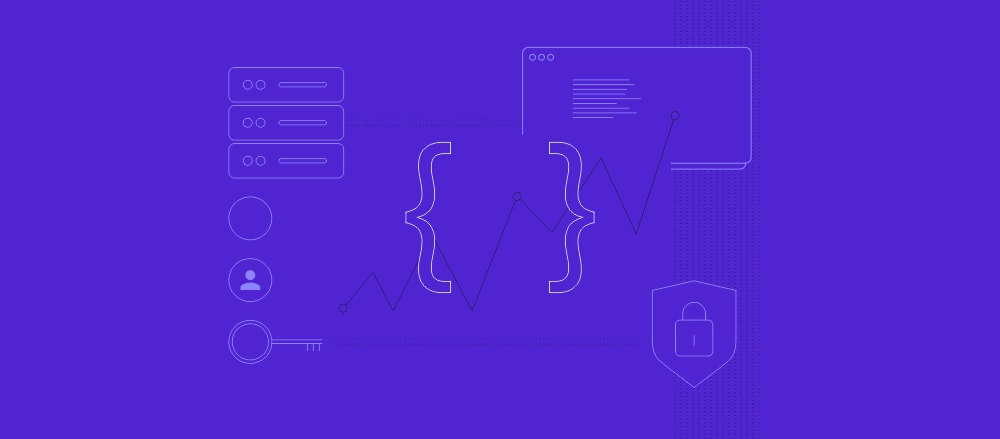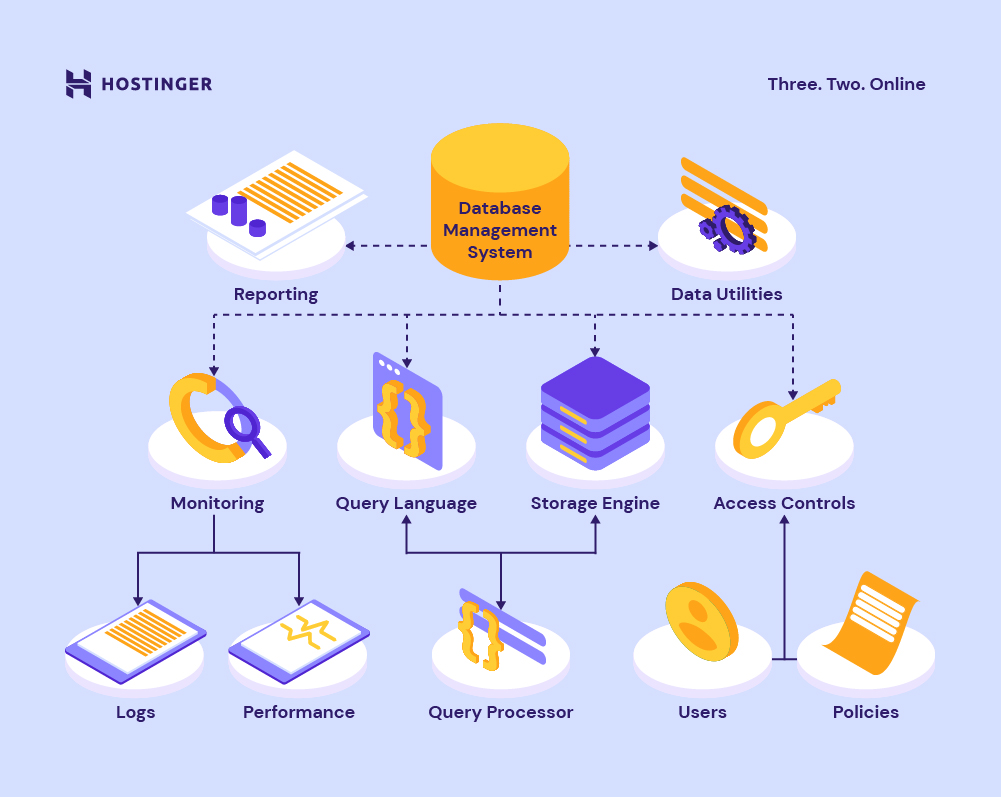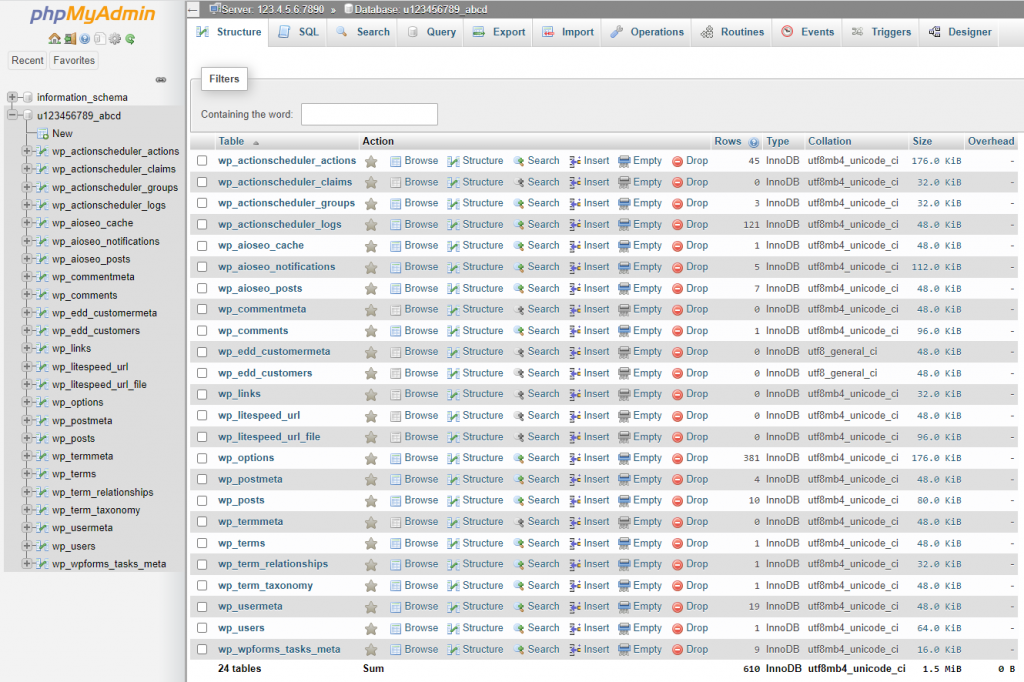What Is a DBMS: Understanding Database Management Systems

Data is a collection of information that can be organized in databases and includes text, numbers, and media. Database management systems (DBMSs) manage data, database engines, and schemas and serve as an interface between users and databases. They can be found on both shared and VPS hosting plans.
DBMSs optimize data organization through the use of a database schema technique known as normalization. As a result, large data tables are divided into smaller sections in order to reduce redundancies and dependencies.
Concurrent access, which allows multiple users to interact with a database at the same time while maintaining data integrity, is also supported by DBMSs.
In this article, we will go over DBMS types and discuss five of the most popular systems along with their features.
What Is a DBMS?
A database management system (DBMS) is software used to manage, store, and retrieve databases. It provides an interface that lets users read, create, delete, and update data.
How DBMS Works
DBMSs work using system commands. By inputting a command, the database administrator gives instructions to retrieve, modify, or load existing data.
DBMSs usually consist of several integrated components that carry out data management tasks:
- Storage engine. It is the core element of a DBMS that interacts with the file system at the operating system level.
- Query language. Examples include the Structured Query Language (SQL) and the MongoDB Query Language (MQL), both used to interact with databases.
- Query processor. It interprets user queries and makes the commands understandable to the database.
- Optimization engine. It provides insights for database performance and queries.
- Metadata catalog. It acts as a repository for database objects. Every time an object is created, it is registered here. The catalog is used to verify user requests and provide details on the database structure.
- Log manager. This component tracks user activity, logins, backups, and other actions performed with the DBMS.
- Reporting and monitoring tools. These utilities generate reports and monitor the DBMS’s resource usage.
- Data utilities. Additional tools that perform backup and recovery tasks, data validation, database repair, and data integrity checks on your shared or private server.
Types of Database Management Systems
DBMSs are categorized based on their database distribution, data model, and the number of supported users. The following are the three main types:
Relational Database Management System (RDBMS)
Relational database management systems have user-friendly interfaces and use structured data in a tabular form with predefined relationships. To interact with databases, RDBMSs use SQL.
Here are the distinguishing features of a RDBMS:
- Structure. Data is structured in the tabular format.
- Users. RDBMSs support multiple users operating it at the same time.
- Programs. RDBMSs control the relationships between incorporated data tables.
- Data. RDBMS can handle large amounts of data.
- Distributed databases: RDBMSs support distributed databases while DBMSs don’t.
- Data redundancy: RDBMSs have keys and indexes to prevent data redundancy. In comparison, DBMSs usually don’t have such features.
Document Database Management System (DoDBMS)
Document database management systems organize data in JSON-like files with almost no relational structure. They usually use the MongoDB Query Language for database operations, including reading and writing.
Columnar Database Management System (CDBMS)
CDBMSs manage databases in the column format to achieve high performance. CDBMSs provide fast analytical processing because they read data efficiently. That’s why businesses with disk-heavy data usually use CDBMS.
The Most Popular Database Management Systems
In this section, we’ll go over five of the most popular DBMSs and discuss the features that set them apart.
MySQL
MySQL is a relational database management system that is based on SQL and client-server architecture. It is one of the most used DBMSs since it is compatible with a number of computing platforms, including Linux distributions, Windows, and macOS. MySQL also supports C, C++, Java, Perl, PHP, Python, and Ruby.
MySQL is a RDBMS – this means that it uses the tabular format to organize data and maintains relations between elements.
As MySQL is open-source, anyone may modify, distribute, and publish it under the terms of the General Public License (GNU). However, you need to purchase the licensed version to integrate or include MySQL code in commercial applications.
If you use MySQL, you may find phpMyAdmin useful – it is a free web application that facilitates MySQL management with an intuitive interface. Feel free our setup guides for phpMyAdmin on Ubuntu and phpMyAdmin on CentOS.
PostgreSQL
PostgreSQL is an open-source enterprise-class database management system that supports SQL for relational and JSON for non-relational queries. Its main users include developers and, database administrators who employ it to develop applications, protect data integrity, and establish fault-tolerant environments. PostgreSQL’s code is available for free under an open-source license.
With PostgreSQL, you can determine your data types, create custom functions, and write code in different programming languages without recompiling your databases. The system will compile the data in a catalog format, utilizing tables and columns and adding access method and function information.
PostgreSQL works on all major operating systems, including most Unix and Linux distributions, Windows, and macOS. It also supports various programming languages, such as Python, Ruby, Java, C, C++, and Perl. If you’re looking to install it on your Linux VPS, check out our guides for setting up PostgreSQL on Ubuntu as well as using PostgreSQL on CentOS.
MongoDB
MongoDB is a not only SQL (NoSQL) document database system that compiles information in collections and documents. Notable MongoDB features include unstructured data storage, full indexing support, and replication using APIs.
MongoDB supports schema-less databases that may consist of a single collection with multiple documents. The data inside a database doesn’t necessarily have to have defined relations. Because of its nature, MongoDB is best for large projects that contain millions of documents.
MongoDB is free software under the Server Side Public License (SSPL). It works with many programming languages, such as Node.js, PHP, Motor, Scala, Swift, and C#. MongoDB can run on all major operating systems, including Linux, Windows, and macOS.
Cassandra Database
Cassandra is another NoSQL distributed database management system. It is notable for its scalability which allows users to add more nodes and machines to increase its computational power. This makes Cassandra excellent for work with large amounts of data.
Cassandra distributes databases by replicating their data across multiple data centers on the cloud. It implements Amazon’s Dinamo-style distributed storage and Google’s Big Table data model techniques which make the system highly available and with no single point of failure. As a result, many big companies such as Instagram, Spotify and Twitter use Cassandra to manage databases.
Cassandra is compatible with structured, semi-structured, and unstructured data formats that can be changed at any time. Furthermore, the database system is open-source and runs on Linux, Windows, and macOS.
Oracle Database
According to the DB-Engines ranking, Oracle is the most popular DBMS. It is an RDBMS with an architecture split between logical and physical structures. One of the standout features of the Oracle database is enterprise grid computing which employs modular physical storage and servers whose size users can adjust.
Oracle is built on a memory caching architecture that ensures maximum performance for very large databases. It includes the Recovery Manager (RMAN) tool that secures data integrity by performing hot, cold, and incremental database backups and recoveries.
Oracle is committed to open technology, so you are free to use, embed, and distribute its code. It runs on all popular operating systems such as Linux, Unix, Windows, and macOS. The database system supports C, C++, Java, COBOL, PL/SQL, and Visual Basic languages for database application development.

Conclusion
A database management system is software that manages, runs, and retrieves queries and data. DBMSs serve as an interface between users and a database, allowing users to work with information while maintaining data integrity.
We’ve discussed the three main types of DBMSs – relational database management systems, document database management systems, and columnar database management systems.
Here are the five most popular DBMSs that we’ve covered in this article:
- MySQL. A relational database that stores data in the tabular form.
- PostgreSQL. A relational database that allows you to customize data types and functions.
- MongoDB. A document database system that converts JSON data into a binary file format.
- Cassandra Database. A distributed database system that replicates data across multiple machines.
- Oracle Database. A relational database that splits physical and logical structures in its system architecture.
We hope this article has helped you understand what DBMSs are. If you have any questions or suggestions, feel free to leave them in the comments section below.




Comments
July 23 2024
Please how can I learn this programming language online with certificate?
July 24 2024
Hi Femi! You can learn coding online for free through platforms like Coursera, Udemy, and BitDegree. Each of these offers excellent courses to help you get started ;)